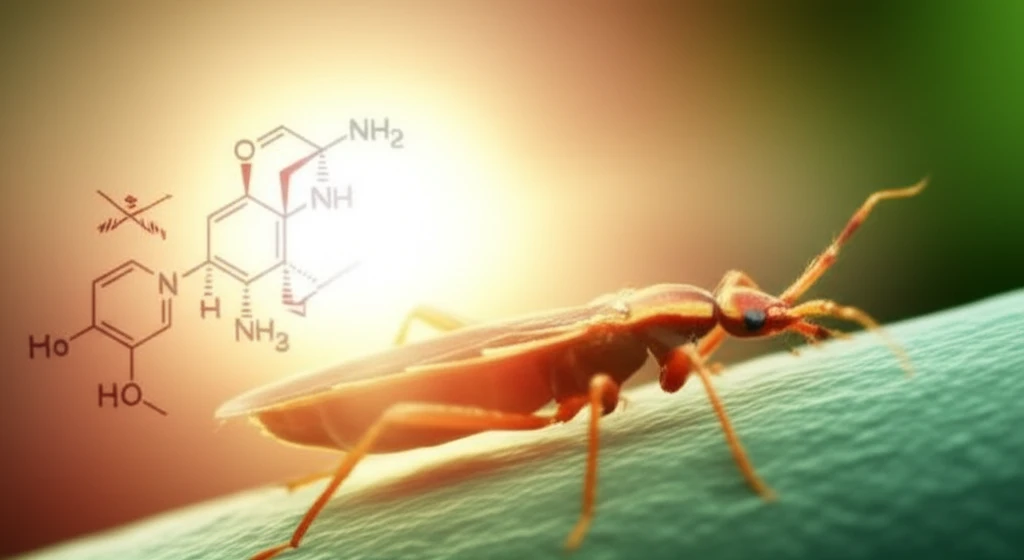
Chagas Disease: New Insights into Insecticide Resistance and Vector Control
"Unveiling the Challenges and Strategies for Combating Chagas Disease in the Face of Insecticide Resistance"
Chagas disease, a parasitic illness transmitted by blood-sucking insects known as triatomines, continues to pose a significant public health challenge, particularly in Latin America. The disease, caused by the parasite Trypanosoma cruzi, affects millions, and its spread is closely linked to the presence and behavior of its insect vectors. Effective control of these vectors through insecticides is a cornerstone of combating Chagas disease, but the emergence of insecticide resistance presents a formidable obstacle.
Recent research has focused on understanding the susceptibility of triatomine populations to various insecticides, including alpha-cypermethrin, a pyrethroid commonly used in vector control programs. This research aims to assess the effectiveness of current control strategies and to identify potential adjustments needed to manage and mitigate the impact of insecticide resistance. The findings underscore the importance of continuous monitoring and adaptive strategies in the fight against Chagas disease.
This article delves into the specifics of a study examining the insecticide resistance of Triatoma sordida, a key vector in the spread of Chagas disease. It explores the methodology, findings, and implications of the research, providing insights into the challenges of vector control and the need for innovative approaches to combat this neglected tropical disease. We'll also examine the broader context of Chagas disease and the global efforts to control and eradicate it.
Understanding Insecticide Resistance in Triatoma Sordida

The study focuses on Triatoma sordida, a prevalent triatomine species in various regions. The primary objective was to assess the susceptibility of T. sordida to alpha-cypermethrin. Researchers conducted both laboratory bioassays and field bioassays to determine the level of resistance.
- Laboratory Bioassays: These tests measure insecticide resistance under controlled conditions.
- Field Bioassays: These tests assess insecticide effectiveness in real-world environments.
- Alpha-cypermethrin: A pyrethroid insecticide used in the study.
- Triatoma sordida: The primary insect vector under investigation.
Implications and Future Directions
The findings of this research have significant implications for the control of Chagas disease. By identifying the level of insecticide resistance in vector populations, public health officials can make informed decisions about which insecticides to use and how to deploy them most effectively. Moreover, the study highlights the need for continuous monitoring of insecticide resistance and the development of innovative strategies to overcome this challenge. Future research should focus on exploring alternative control methods and on understanding the ecological and behavioral factors that influence vector populations.
